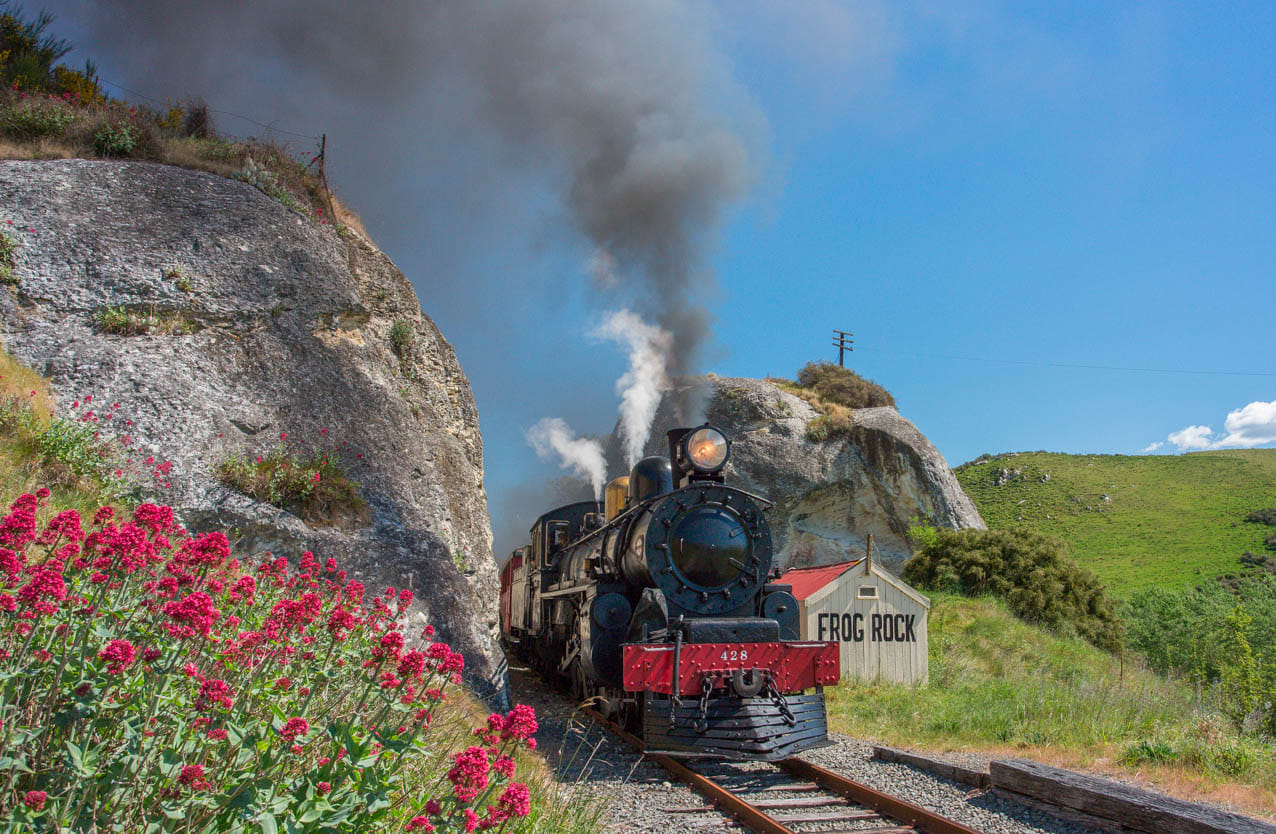The Weka Pass Railway has two stations on its line. Our main station, Glenmark, is situated on Glenmark Drive in Waipara. Our other station, Waikari, is located on State Highway 7 in the village of Waikari. Between the stations – 13 kilometers of limestone and vineyard scenery
Glenmark Station – Waipara
Our Glenmark Station is located at 113 Glenmark Drive in Waipara, around 45 minutes north of Christchurch.
The building once served the area of Mina. After the Mina station closed, the WPR purchased and relocated the building.
The station has both indoor and outdoor seating areas, toilet facilities in the large car park, and a small shop which sells ice creams, soft drinks, toys and railway memorabilia. The railway’s ticket office is located in Glenmark station, open from approx 10:30 am on Standard Public Train running days. Payment by cash, EFTPOS and credit card is available in the shop and ticket office.
InterCity’s Waipara Junction bus stop is a 20 minute walk from Glenmark Station. At present, no passenger trains stop at KiwiRail’s Waipara Station. Do not mistake Glenmark Station with KiwiRail’s Waipara Station on Ferguson Ave
Waikari Station
Our Waikari Station is located on State Highway 7 (Weka Pass Road), on the south side of the Waikari Village.
The building once served Hundalee, in the Conway Valley. After the Hundalee station closed, the WPR purchased and relocated the building to Waikari.
The station has both indoor and outdoor seating areas, and basic toilet facilities. Better toilet facilities can be found across the road. Several food outlets, including the historic Star Hotel, are located within a 5 minutes walk from the station. InterCity’s Hanmer Connection bus stops in the village.
On Standard Public Train running days, Morning Trains have 45 minutes at Waikari, and Afternoon Trains have 25 minutes at Waikari. Many guests like to pack a picnic to enjoy at Waikari Station.

Olive Groves and Vineyards
The first 3 kilometers of the Weka Pass Railway run along a gently sloping alluvial fan on the floor of the Waipara Valley. In the late summer and early autumn, pools of warm air drift in the evening from the Canterbury Plains surrounding Amberley, towards the hills of the Weka Pass and around Scargill. Dry ‘nor-west’ winds seep over the same hills, stagnating the warm air over the Waipara Valley. This rare weather phenomenon was capitalised on around 35 years ago, and since then, the Waiapra Valley has produced some of New Zealand’s most exquisite wines.
The line passes alongside the Sherwood, Bishops Head and Waipara River Estate Vineyards on it’s inital climb towards the hills, as well as a small olive grove. Behind the train, the Teviotdale Hills. These protect the Waipara Valley from the cool winds blowing from the sea. Waipara has the highest summer temperatures and the lowest rainfall of any New Zealand wine region.
Rolling Hills
After passing the 3km peg, the line begins to climb initally at a rate of 1 in 55. An irrigation reservoir is passed on the left, before views open up towards the Weka Creek. After passing a stand of pine trees, the line passes an 1880’s track gangers hut and a couple of old railway trolleys. On night trains, the lights of Christchurch and the Port Hill suburbs can be seen in the far distance as the train clings to the lower slopes of Mount Donald. After passing through the first significant limestone cutting, these lights disappear treating guests to uninterrupted views of the night sky.
In daytime hours, views extend up the Weka Creek Valley after passing another small irrigation dam. The line joins up with the Archers Stream, and the Pass narrows.
Limestone Formations
A series of 5 sweeping left hand curves on high embankments, flanked on both sides by limestone cuttings, carry the line towards Frog Rock. On the last of those curves, the gradient reaches 1 in 47, the ruling gradient of the Weka Pass Railway. Frog Rock and Seal Rock are passed around 9 kilometers in to the journey. The cutting walls contain fossilized indications that this land was thrust out of the ocean millions of years ago.
Beyond here, the line follows the highway closely for a short distance, before curving away. The Weka Pass Viaduct site is passed, a buried structure that was filled in with soil in the 1930’s.
A few minutes before reaching the summit at Timpendean, passengers are treated to some stunning views of two protected limestone rock faces out to the right. After passing the only (very small) bridge on the 13km line, Waikari is reached, around 240 meters above sea level.


